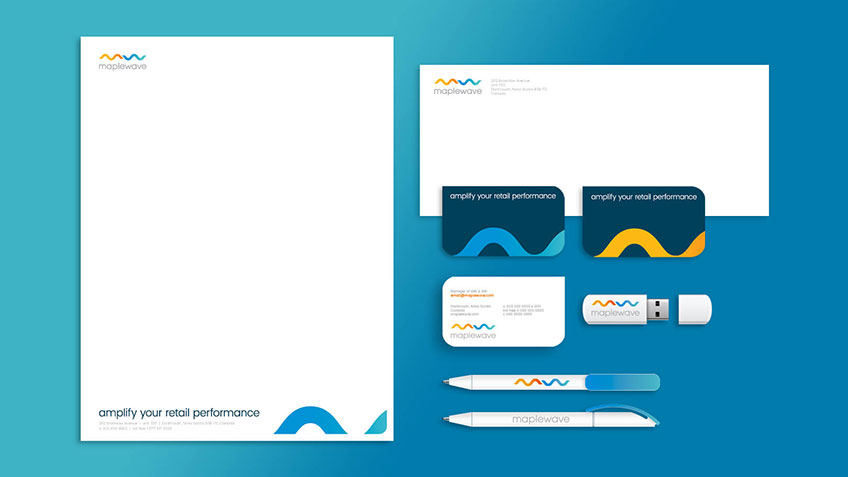Rebranding is a risky business. Done well, it can dynamically change the future of a company. Done wrong, it can be an embarrassing public relations snafu and seriously harm your brand equity. But doing nothing is not an option. Consumers are changing, the market is changing – brands have to change too. The question is, do you need a brand evolution or a brand revolution? There are risks in going too far, but not going far enough can also be deadly. The short answer to whether you need major rebrand versus a brand refresh is that it depends on your situation.
Here are some scenarios that will help you decide whether now is the time for a big change, or whether an incremental approach is more appropriate.
SCENARIO ONE: The Young Brand Grows Up
Relatively newer brands that are entering new markets, opening new locations or expanding services naturally want to put their best foot forward. New brands often go to market without having invested in a thorough branding exercise. Or the brand may be relevant to current customers but is unlikely to resonate with the new target demographic. Before considering any strategic growth initiative, taking a hard look at your brand is critical.
This is a scenario where a brand revolution is often required. Just remember – Google was originally “Backrub” and Amazon was previously known as “Relentless.” In the early years, making a big change may offer more benefits than risks – especially if you’ve banked on a name like Backrub. A newer brand has less equity and can adapt to elements like a new name and look more easily. Ensuring you enter a strategic growth phase with a strong name, look and value proposition is critical in today’s competitive market.

SCENARIO TWO: Mergers & Acquisitions
M&A rebrands are a common scenario – but they require a range of approaches. If a large brand with a lot of equity takes over a smaller, unknown brand, it’s easy to fold the smaller company in. But often there is equity in both brands and a rebrand initiative needs to consider carefully how to keep that value intact. This is where a brand evolution is most likely a best approach.
An excellent example of a successful merger rebrand is that of Canadian national banks Toronto Dominion (known as TD) and Canada Trust. Given that both names carried an enormous amount of equity, an evolutionary approach was the right one. The green colour and square icon of TD’s brand was more differentiated and recognizable. Overall TD’s branding had a stronger position, which is reflected in the new brand design – but keeping the Canada Trust name ensured that the equity in that brand was not lost. Today, TD Canada Trust is one of Canada’s strongest brands.
SCENARIO THREE: Late to The Innovation Game
Sometimes brands don’t keep up. The results can be catastrophic. HMV, Kodak and Yahoo are perfect examples. Many brands currently face similar fates, exacerbated now by COVID-19.
In such a case, a rebrand must be revolutionary – but it cannot simply be cosmetic: it must address a value proposition that no longer meets consumer needs. Rather than a brand design exercise, this is a brand strategy problem and demonstrates why every company must become innovative.
If brands on the brink can reimagine themselves, there is hope. Old Spice managed one of the most unlikely comebacks in 2010. The “grandpa” brand relaunched with a 2010 SuperBowl commercial that built on the brand equity in a modern, fun way.
Repositioning is a tricky scenario and requires fresh thinking, either from a change in management, a strategic consultant, or both.
SCENARIO FOUR: Keeping Ahead
Even if your company is in a strong position today, reviewing your brand assets and strategy on a regular basis is a smart idea. It ensures you are constantly thinking about what your customers want before they want it.
That being said, it’s important not to be reactionary and simply jump on a trend. Any refresh needs to reflect what makes your brand unique. BMW’s new logo is one of many that was controversial because it appears to be more based on trend than need, and many felt the design was off-brand.

Does COVID Change Things?
Many companies are holding off on making any new investments in response to the economic impact of the pandemic. While this may be necessary for survival in some cases, it’s important to note that other organizations are taking the disruption as an opportunity to pivot, innovate and experiment. These companies will most certainly emerge from the pandemic in a stronger position than those who do not.
BRAND EVOLUTION OR REVOLUTION: The Final Word
Whether you are simply refreshing a logo or making a major change to your brand position, it’s critical to onboard your employees. Many brands make major investments in design, strategy and research – but fail to ensure their frontline teams fully understand and embrace the change. They are the ones who will live the brand and investing in their engagement is the final step to ensuring your new brand experience is fully realized.
As Gucci CEO Marco Bizzarri, who revolutionized the brand, told Fast Company “Changing the aesthetics was the easy part. It is changing the culture among the employees that was hard.” Employee engagement and onboarding is the final step in any successful rebrand.


